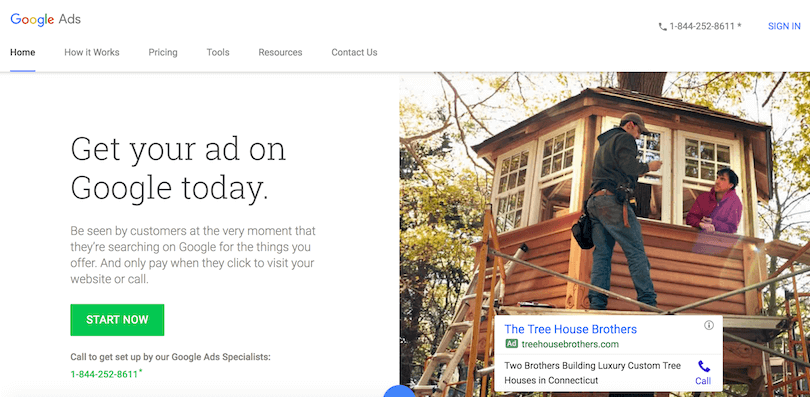How to sell products online – the only guide you’ll need
If ”selling products online” sounds tempting to you…
If the idea of making passive income from your passion makes you happy…
If ”being your own boss” is something you strive for…
…then this guide is for you.
Today, with all the tools available and the cost of starting a business being smaller than ever before, there really is no excuse NOT to do it.
So, if you’re ready to become an entrepreneur, in this post you’ll find everything you need to know to start your own online business. Here’s what you’ll learn:
- What types of products you can sell online?
- Where can you sell online?
- How to get traffic and first sales?
- How to optimize your sales?
So, buckle up and let’s get started!
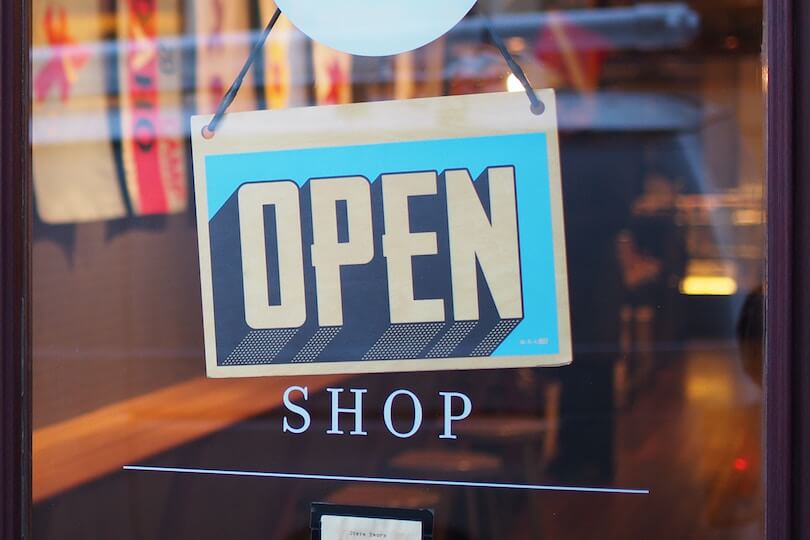
What types of products you can sell online?
The first step to building your online business is to decide what types of products you want to sell. There are various options – each with their own pros and cons.
You have to choose between:
- Digital vs physical products, and
- Mass vs niche products.
Let’s take a closer look at each of the options to help you find the best items to sell online!
Digital vs physical products
Digital products
Digital products are goods that are not tangible and exist in digital form – stored either on someone’s device, on a server or in the cloud. Some examples are ebooks, online courses, music, Photoshop presets, but there are many more – check out this list of digital products.

- Infinitely scalable. Make your product once, then sell it to many. There are no limits of how many products you can sell.
- Lower costs. The cost of creating a digital product is minimal to none. In addition to that, you don’t have to invest in additional storage space, equipment or staff to keep up with the growth. You can easily sell thousands of your product per month, and still be a one-person team.
- Higher profit. Because you don’t need to invest in materials, pay for storage, packaging, and shipping, your profit margin will be significantly higher than when selling physical products.
- Harder to justify value. Why should anyone pay when there are thousands of digital products and resources available online for free? You’ll have to clearly and persuasively demonstrate the value of the products you’re selling.
Physical products
Physical products – you guessed it – are tangible. Those are any goods that you have to ship to the customers after they’re sold, like merchandise, apparel, home decor, tech gadgets, etc.

- Easy to demonstrate value. The use and need of tangible products are easy to explain. Besides that, people tend to attach higher value to physical products because they feel more real than digital products.
- Higher perceived longevity. It depends on products, but physical things may feel more long-lasting, which, again, could make them easier to sell. Think about it – if you buy a book, it will stand in the shelf for years. In the meantime, an ebook will probably get lost when you change devices.
- Lower profit. By selling physical goods, be ready to give away a serious cut from your profit to pay for production, handling, and shipping – even if you make the products yourself.
- More hassle. Your inventory has to be managed, and every product has to be individually packed and shipped to the customer. To save time, you can use 3rd-party dropshipping services, however, every service has their fees, which will further reduce your profit.
- Growing costs. The more products you sell, the bigger team you have to hire to handle incoming orders.
Mass vs niche products
Mass products
Mass products are made for the general public – customers of different ages, genders, with different lifestyles, interests, and preferences. These products are made to be useful and/or aesthetically appealing to a variety of people.
Typical mass products are physical goods like apparel or computer accessories, or digital products like mobile games (think – Candy Crush, Angry Birds) or Hollywood movies.

- Large market. Mass products are made for everyone, which means that the potential customer base is huge.
- Competitors may be helping you sell your product. The bright side of large competition is educated consumers, and that definitely helps when you need to sell your product. For example, there are thousands of sellers offering backpacks and no one has questions about what are they and how to use them. Now, if you decide to sell backpacks, you just have to make sure your product is in your potential buyer’s sight when he/she is looking to purchase one.
- Bigger competition. By selling your product to everyone, you’re automatically competing with every seller offering the same or similar product. That often results in lower profit margins, as sellers tend to lower prices to attract more customers.
- Higher marketing costs. By selling products to masses, you don’t really know who your customer is. As a result, your marketing campaigns can turn out impersonal, and thus inefficient and expensive. To sell more products, you have to reach as many people as possible, which requires time and a significant amount of capital.
- Easy to replace. Mass products are often easily interchangeable, as they’re made for everyone and lack uniqueness. It’s like selling a plain white made-in-China t-shirt – explaining why yours is better than thousands of similar ones may be challenging. That’s also the reason why entering mass markets may be difficult for new sellers.
Niche products
Niche products are made for a specific, narrowly defined market segment. These products are adjusted to target customers’ demographic characteristics, such as interests, values, lifestyle preferences, etc.
Some examples of niche products are metal straws for zero-wasters, online courses for content marketers or dreamy-looking Photoshop presets that are specifically made for travel photographers.

- Less competition. Niche products are more unique and specific so there will be less or no other brands offering the same product. It’s a big benefit, especially when there’s still a decent audience to target.
- Higher profits. When there are fewer competitors in the market, you can afford to set higher pricing, and people would still buy, as there are no alternatives.
- Higher conversion rates. By knowing who your customer is, you can create very targeted and personalized marketing campaigns, which are proven to be more efficient than general ones. In fact, one study found that 78% of consumers are likely to buy from a seller who presents them with offers targeted to their interests and needs.
- Customers are easier to please. It’s easier to make products that a small number of people really love, than a product that many people somewhat like.
- The market is limited. No matter how big your niche is, it has its limits. When making a product for a specific niche, you have to make sure the chosen niche is large enough for your business to grow.
- Influencer marketing is a big deal. The success of your niche business will greatly depend on your ability to get the word out. That’s why a decent follower base and an influencer’s reputation in the particular niche will matter. Otherwise, getting your business off the ground will be a challenge.
Where can you sell online?
Now that you have an idea what type of products you want to sell online, the next question is – where?
Here are your options:
- Build your own store
- Sell your products on online marketplaces
Build your own store
Today, you don’t need to design and code a website from scratch – there are various e-commerce platforms that allow sellers to build their storefronts and manage sales while taking care of all things happening in the backend.
Create your own online shop if:
- Building your brand (and brand recognition) is important to you
- You don’t want to lose a part of your profit in marketplace referral fees
- You have ideas how to generate traffic to your store
- You already have a decent social media follower base and/or blog readership
- You want to build a community, attract brand fans and earn from repeat purchases
Here are some of the most popular e-commerce platforms you can use for your business:
Sellfy

Sellfy is among the most popular e-commerce platform for digital products. Sellfy allows digital content creators (eg., music producers, ebook writers, etc.) to sell their products online through a simple and beautiful storefront, or embed their listings in other websites.
The platform offers a selection of built-in marketing tools to help you boost and retain sales, including features like upselling, email marketing and discounts.
Special feature:
Embed product listings from your Sellfy store into your website or blog. For example, if you write a travel blog and sell Photoshop presets on a Sellfy store, you can embed a ”Buy now” button into a blog post that talks about travel photography.
Price: starting at $29/month
Payment options & fees:
- PayPal (2.9%+$0.30 per transaction)
- Stripe for card payments (2.9%+$0.30 per transaction)
Shopify
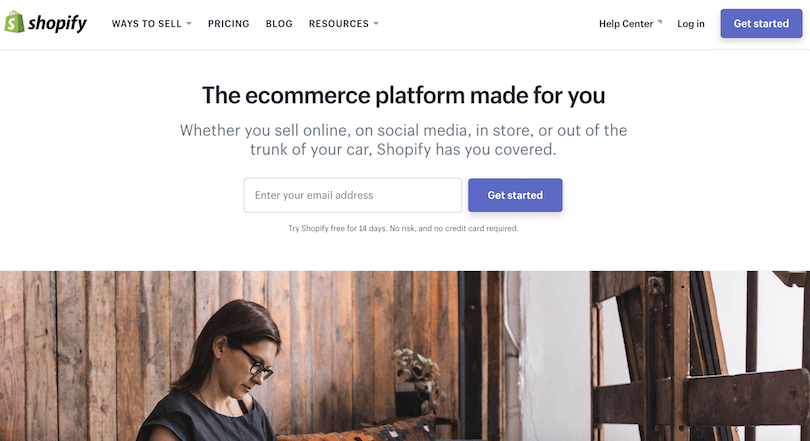
Shopify is an e-commerce solution that allows sellers to set up a store and sell digital or physical products online. You can choose from 65 themes to build your website on, then optimize your shop with the help of over 1000+ third-party apps.
Special feature:
Abandoned checkout recovery emails – send automatic reminders to customers who’ve added a product to the cart, then left your store without a purchase.
Price: starting at $29/month + 2% transaction fee if you use external payment gateways
Payment options & fees:
- Shopify Payments (2.9%+$0.30 credit card fees)
- External payment gateways, including PayPal, Amazon Pay, Stripe (2.9%+$0.30 credit card fees)
WooCommerce
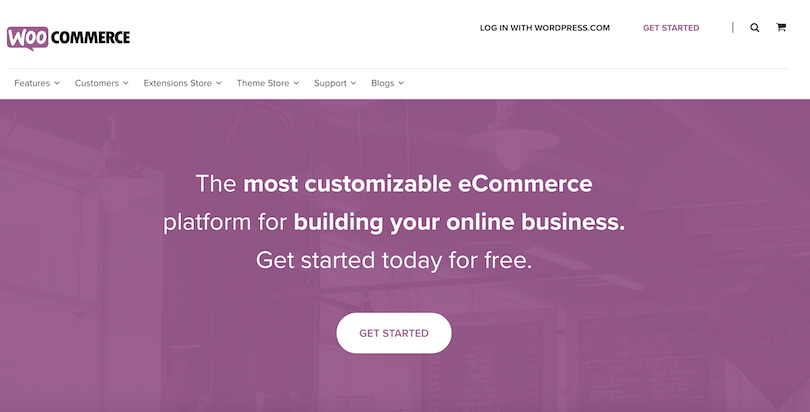
WooCommerce is an e-commerce plugin for WordPress. That is, if you already have a website built on WordPress, you can turn it into an online shop with the WooCommerce plugin, then customize it with additional features available as extensions.
Special feature:
The product highlight feature allows you to showcase specific products throughout the store, eg., highlight your best-sellers, discounted products or recently viewed products.
Price: the Business plan for hosted WordPress with WooCommerce features will cost you $25/month (paid yearly) + transaction fees.
Payment options & fees:
- Built-in solutions:
- PayPal (the first $50,000 in transactions are free; then, it’s 2.9% + $0.30 per transaction)
- Stripe (2.9% + $0.30 per transaction)
- Extensions, including Amazon Pay, Klarna, etc. (2.9% + $0.30 per transaction)
Sell on an online marketplace
Selling on marketplaces means offering your products on third-party websites that already include product listings from other sellers across various product categories.
List your product on an online marketplace if:
- You’re okay with paying up to 20% of your product’s price in marketplace fees
- You want to focus on selling your product, instead of building and maintaining a website (although, Sellfy would work in this case as well!)
- You want to make use of the marketplace’s established customer base
- You’re ready to compete for attention with other brands on the same website
Here are the best-known marketplaces you can sell your products on:
Amazon
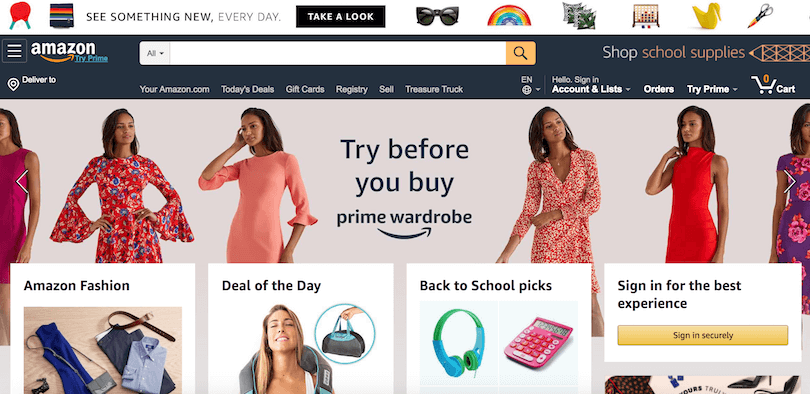
Amazon is the world’s biggest marketplace with over 310 million active customers and $179 billion yearly revenue. What’s important – 53% of all products bought on Amazon are sold by third-party sellers.
Because of its popularity, the competition for shoppers’ attention is tough – there are over 2 million third-party merchants selling their goods on Amazon.
Best for: physical mass products.
Price: the Professional plan (recommended) is available for $39.99 + per-item selling fee that varies depending on your product category.
The Professional plan is recommended if you want to use Amazon’s built-in marketing tools to promote your products within the marketplace. Other than that, you can go for the Individual plan – you’ll only have to pay $0.99 per listing and no monthly fees.
How to get paid:
Every 1-2 weeks, Amazon will disburse funds from your seller account to your bank account.
Etsy
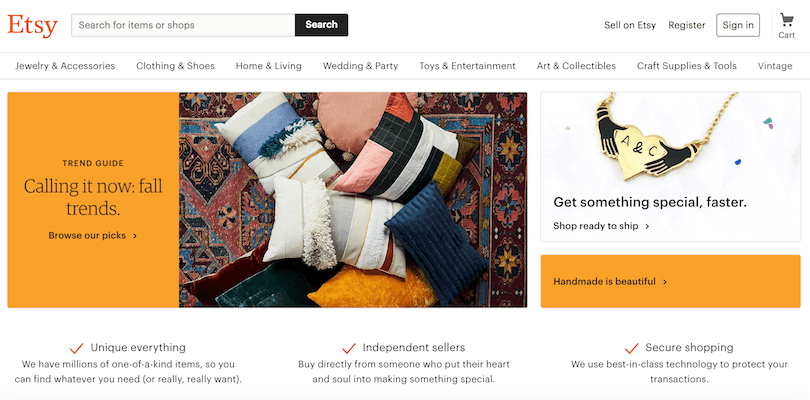
Etsy is a marketplace for DIY and handmade products, as well as unique vintage goods. It’s the 9th most popular e-commerce site in the USA, and the majority of products sold on Etsy fall into categories like arts and crafts, jewelry, home decor, and paper goods.
There are 1.9 million active sellers on Etsy, and the marketplace’s yearly revenue is $441 million. Over 33 million people shop on Etsy every year, 81% of them are female. In comparison to Amazon, Etsy is more of a niche marketplace.
Best for: physical or digital niche products.
Price: $0.20 listing fee + transaction fees
How to get paid:
Receive payments through Etsy Payments (charges 5% transaction fee + 4%+$0.25 payment processing fee.) You can disburse your earnings manually at any time, directly to your bank account.
eBay
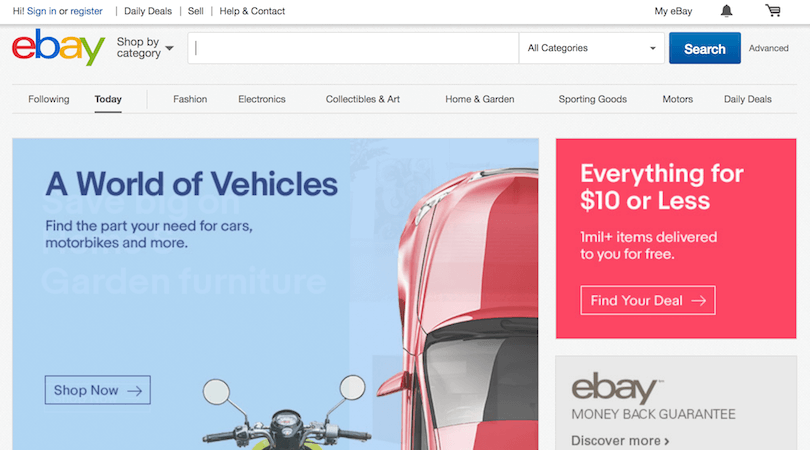
eBay is an online marketplace that’s best known for its auctions. It’s a place where people can sell or trade goods and services, and today, eBay is the second largest online shopping website in terms of traffic – over 817 million people visit the website every month.
According to the stats, there are 25 million people selling on eBay, which makes it the most competitive marketplace on our list.
Best for: physical niche products and antiques.
Price: you get 50 free product listings per month. Beyond that, the fee for listing is $0.30. The selling fee is 10% or less (depends on your product category.) Additional fees apply if you want upgrades like larger photos, international listing visibility, etc.
How to get paid:
Receive payments immediately if the buyer pays with PayPal. Card payments may take longer, usually around 3-5 business days.
Conclusion:
Online marketplaces are a good option for beginners and sellers with no social following base. However, from your profit perspective, building your own shop is the best way to sell products online.
How to get traffic and sales?
So, you’ve come up with your product idea and listed it on either your own shop or an online marketplace of your choice.
Now what?
The next step is to let people know about your product and generate traffic to it. You can do it two ways:
- For free, using your connections and follower base
- Using paid ads
Paid traffic
For many businesses, getting enough traffic to their websites is often a challenge. Luckily, there are paid ads – probably, the fastest way to generate traffic to your shop and product.
So, here are three reasons why paid traffic is great:
- It’s fast. You can set up a campaign in minutes and start seeing results very quickly.
- It’s trackable. You have access to analytics, so you can see which campaigns are performing well, how much traffic – and sales – they generate, etc.
- It’s scalable. Once you find which campaign is working, you can simply increase the budget and boost your results.
There are many paid ways to generate traffic. If you sell your product on an online marketplace like Amazon, eBay or Etsy, it’s best to use their built-in advertising solutions. If you’re running your own website, give Facebook Ads and Google Adwords a try.
Facebook ads
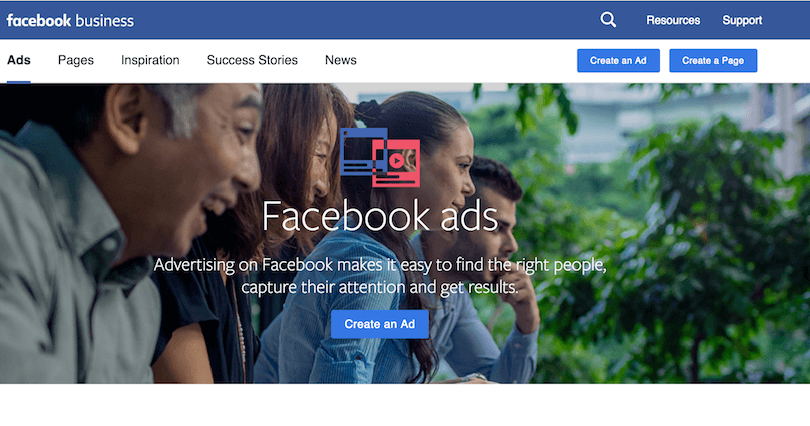 Thanks to the laser-focused targeting options, Facebook Ads are one of the most popular options for advertising online.
Thanks to the laser-focused targeting options, Facebook Ads are one of the most popular options for advertising online.
Besides that, Facebook Ads allow you to place ads on both of the world’s leading social media platforms at the same time – Facebook (including Facebook Messenger) and Instagram. That gives you access to an enormous global audience, as over 2.5 billion people worldwide use at least one of Facebook’s apps.
Setting up your Ad Account, connecting it to your online shop and creating your first Facebook ad is easy – you don’t need any specific skills or knowledge to do it. Here are some ideas for your first campaigns:
- Find customers based on their interests, demographics, etc. For example, if you sell digital poster print files, you can target people with interests ”motivational posters” who’ve recently moved to a new home.
- Find more people similar to your existing customers, store visitors or fans with the Lookalike audience feature. For example, if your shop already has purchases, you can gather email addresses of these buyers, upload them to Facebook and ask it to find more users that have the same interests and characteristics.
- Ask Facebook to track people who’ve been to your website but left without a purchase, then show them ads reminding them to finish their purchase. That’s called retargeting, and for that, you’ll need the Facebook tracking code installed into your website – something that won’t be possible if you sell your products on an online marketplace.
Pro tip:
While you can use Facebook ads to promote your listings on online marketplaces, that might not be the most efficient way to invest your money. Most marketplaces don’t allow conversion tracking, which means – you won’t see how many people have visited your product page from a specific campaign, and how many have made a purchase. As a result, you’ll never really know how your campaigns are doing and if they’re performing at all.
Google Ads
Google is the biggest search engine in the world, and by using Google Adwords you can advertise to billions of people worldwide visiting it every day – multiple times!
Besides that, Google has partnered up with millions of popular websites, so that your ads show not only when people visit Google, but also when they are browsing other sites.
There are two main types of ad campaigns you can set up via Google Adwords:
Search campaigns
Search campaigns are based on keywords. That is, when your potential customer comes to Google and types in a search phrase that’s related to your product, your ads show up and, hopefully, get clicked.
When compared to Facebook ads, search ads can be much more efficient. It’s because people don’t go on Facebook to find products, while they do often use Google to search for things to buy. That is, people visiting Google have much higher buyer intent, and thus it’s easier to turn them into customers.
Display ads
Display ads are shown all around the internet. While Search ads are for people already looking for something specific, Display ads are great for reaching people before they specifically start to search for products that you offer.
These ads are also used for retargeting – ads that are shown to people who’ve visited your website and left. Just like in the case of Facebook, Google retargeting ads can also be used only if you have your own website, as the majority of marketplaces don’t have the option to add the tracking code.
Pro tip:
While Facebook and Google Adwords are the most popular paid advertising networks, there are many more. Depending on the type of your product, you may find Twitter, Pinterest or Reddit ads more suitable. For example, if your target audience is marketers and journalists, Twitter might be a better fit, as it’s heavily used by people working in these industries.
Free traffic
Compared to paid traffic, free traffic flow takes longer to establish and see results. The results from free traffic campaigns are also more difficult to measure. And yet, there are several strong reasons why you should put in the effort and focus on organic traffic:
- It’s free! Who doesn’t want to save money, especially when the business is in its early stages?
- It’s authentic and thus more valuable. People who follow your social media or have subscribed to your email list are usually genuinely interested in what you’ve got to offer. As a result, such traffic usually shows higher conversion rates.
- It’s long-lasting. Free traffic campaigns can continue to drive visitors long after it’s been stopped. For example, one blog post can continue to rank on Google and attract new visitors years after it’s been published.
The most popular free traffic sources are social media, email, and SEO (search engine optimization.)
Social media
There must be a reason why 81% of all small and medium businesses use one or more social platforms to connect with their customers. Social media networks have proven to be effective in generating traffic and boosting sales.
If you already have a social media presence and at least 1000 followers, you can easily make your first $1000 in a matter of days. We’ll show you how – download Sellfy’s ebook that is full of tested and true actionable tips to help you make money by selling digital products online.
Here are social media platforms that are best (read: most efficient) for generating free traffic to your product:
Instagram is the third most popular social media in the world with over 800 million daily visitors. Besides that, Instagram is by far the most engaging social media platform for brands with 2-7% of users interacting with each post. In comparison, Facebook’s average engagement rates are between 0.12% and 1.5%.
High engagement rates signalize high interest, which often leads to better sales. But – to sell on Instagram, you must first grow the number of your followers. Then, make sure it’s easy for followers to visit your website:
- Add a link in the bio
- Tag products in your captions
- Add links to your Stories (available to business profiles with 10k+ followers)
Good example: Christian Maté Grab

YouTube
With over 1.57 billion monthly users, YouTube is not only one of the biggest social media platforms, but also the second biggest search engine in the world. People often visit YouTube for the same reason as they go to Google – to search for answers to their questions.
Selling on YouTube is made possible thanks to many tools that allow users to link from their profiles to external websites. You can add links to your products in:
- Video descriptions and comments
- Your profile banner
- End screens
- YouTube cards
Good example: Peter McKinnon
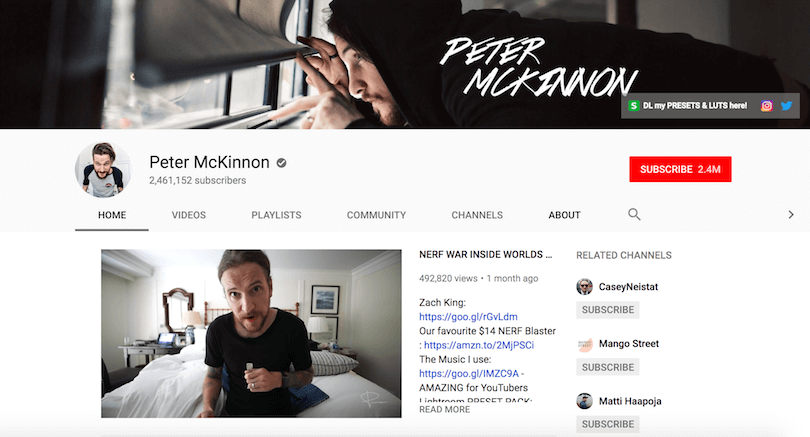
At the top of the most popular social networks, Pinterest ranks right behind Facebook, Instagram, and YouTube. What makes Pinterest a great channel to drive traffic and sales, is the fact that 93% of pinners admit they use Pinterest to plan purchases.
Besides the fact that every pin links back to your product, Pinterest also offers a feature called ”Buyable Pins”. These pins will have an “Add to bag” button that allows users to buy products directly from Pinterest.
Good example: TecCrowd
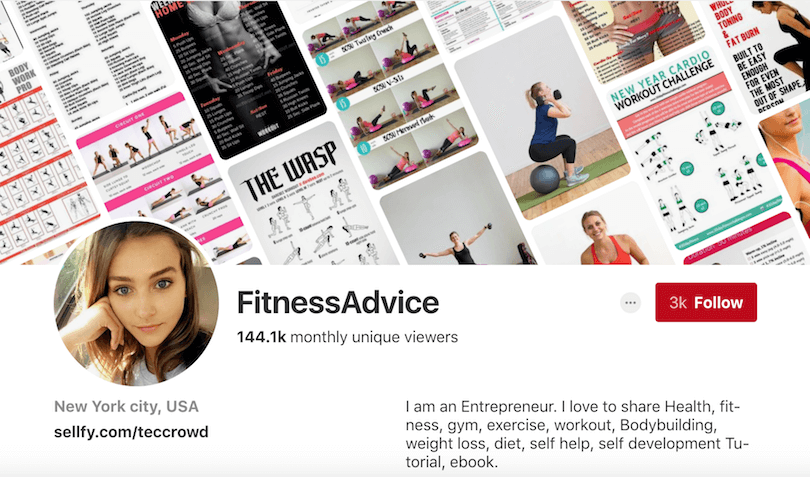
Believe it or not, but emails are still one of the best ways to generate traffic to your website, drive sales and keep a strong connection with your audience. People have deliberately subscribed to your list to hear from you – either they love what you’ve got to say, they’re interested in what you’re selling, or both.
Atop of that, email marketing has one of the highest ROI (return-on-investment) – 4400%. That is, for every $1 you spend on building your list, you can get $44 back.
Unfortunately, online marketplaces don’t allow list building, which is an enormous loss for sellers. But if you’ve built your own shop, email marketing should definitely be on your to-do list.
Pro tip:
Email marketing is made easy thanks to built-in functionalities most e-commerce platforms offer. For example, as a Sellfy user, you can send sales campaigns and interact with your customers directly from the platform, without using (and paying for) third-party solutions.
Here are some email campaigns that are proven to yield visible results:
- Welcome email – thank your new subscribers for joining the list.
- Product launch email – announce new products and product updates.
- Promotions – introduce discounts and other deals.
- Tutorials and tips – show and tell how to use your product.
- Upsell – offer customers to buy additional products from your shop that are related to their original buy.
SEO (search engine optimization)
Google search is a huge deal, simply because it’s a way how the majority of discoveries on the web happen.
When you don’t know something, you google it. When you’re looking for a solution to your problem, you google it. When you need to find something to buy, you…google it!
As much as 51% of all website traffic and 40% of average store revenue comes from organic search. That is why doing SEO for your store – optimizing your store and product pages so that Google can find them – is so crucial.
That being said, keep in mind that Google is not the only giant search engine people use to find things. In fact, here are the top most-used search engines in the world:
- YouTube
- Amazon
- Bing
- Baidu (in China)
So, if you’re selling your product through YouTube, besides optimizing your store for Google, you may also want to optimize your YouTube account. Or if you’re selling your product on Amazon, Google would be irrelevant to you and you should instead optimize your listings for Amazon search.
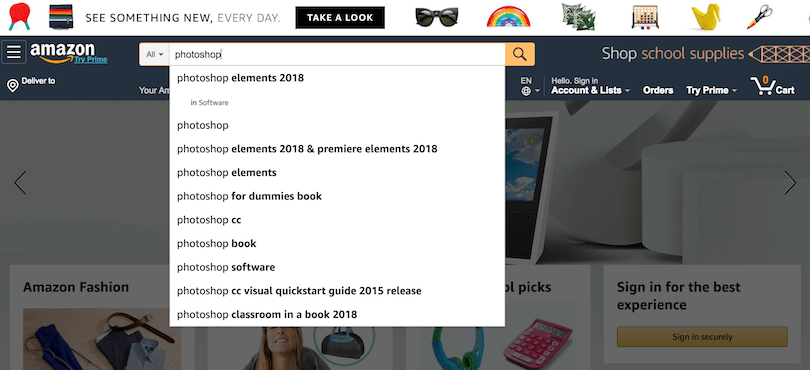
What’s important – when it comes to SEO, there is no “one tactic fits all”. Each search engine has its own rules for better rankings. For example, YouTube can ”read” keywords mentioned in videos, so you actually have to say the keywords you want to rank for. In the meantime, Google loves long-form content and backlinks, while Amazon pays bigger attention to product features that are listed next to the product image than long-form product descriptions.
Pro tip:
SEO is a long-term marketing strategy, so don’t expect immediate results as soon as you add keywords to your product pages. So, have a strategy, implement it and be patient.
How to optimize your sales?
So, you’ve launched your product and ensured a steady traffic flow. Sooner or later, orders start to roll in. Great! But sale can always be better.
Therefore, here are two more advanced strategies to increase your sales:
Use upselling and cross-selling to increase your average order value
First, let me quickly explain the difference between upselling and cross-selling:
- Upselling means offering customers to buy a higher-end (better, bigger, etc.) product than what they had initially chosen.
- Cross-selling means offering customers to add complementary products to their order.
If you’ve ever been to Starbucks, you’ve experienced both upselling and cross-selling:
”Would you like a grande latte for just an extra $0.20?” – That’s upselling.
”Would you like a muffin with your coffee?” – That’s cross-selling.
Here’s why you should use these strategies:
Upselling and cross-selling are easier than selling to new customers. That is, once a person has made their purchasing decision, it’s easier to sell them an upgrade or additional items than it was to convince him or her to buy from you in the first place. In fact, stats show that the probability of selling to new customers is 5-20%, while upselling and cross-selling works 60-70% of the time.
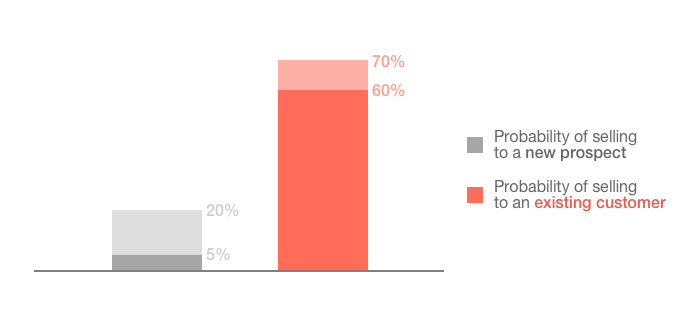
Some may cringe when hearing these words, but the fact is – usually, both the seller and customer are left satisfied. For example, when you’re upselling, the customer gets a noticeably better version of your product paying just a little extra, while you’re earning a little more. It’s a win-win!
The bottom line is:
Upselling and cross-selling techniques can significantly increase your average order values, which, consciously, will boost your revenue.
Pro tip:
As a Sellfy user, make use of the built-in upselling feature and set up your campaigns in a matter of seconds.
Use analytics to discover what works and what doesn’t
Tracking results of your campaigns is a must, even if you don’t invest money in paid advertising. Your time is also money, so don’t waste it doing things that don’t bring any results.
Half the money I spend on advertising is wasted; the trouble is I don’t know which half. – John Wanamaker
Almost all tools have analytic dashboards that will help you understand what works and what doesn’t. To name a few:
- Instagram has ”Insights” – discover your most popular posts, see how many people each post has reached, etc.
- Facebook Ads Manager has ”Campaign” overview – see how much clicks your ads get, how many purchases your campaigns generate, how much each campaign costs you, etc.
- YouTube has ”Channel Analytics” – see your most-watched videos, average view duration, etc.
- Your website MUST HAVE Google Analytics – see where your traffic comes from, which marketing activities generate the most sales (use Google Campaign URL Builder to generate unique links for each of your campaigns and see accurate stats), etc.
In other words, analyze the results of your activities, discover what works best, then do more of it.
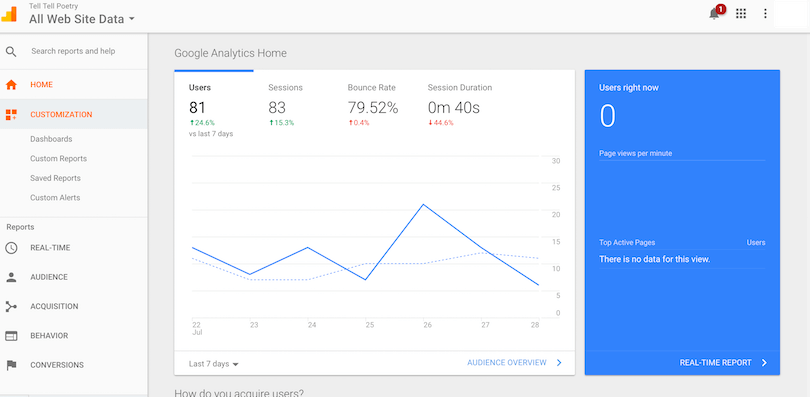
Final words
Look:
It took about 8 hours to write this article. It’ll probably take you half of that time to actually launch your business and start selling products online.
If you’re ready to take that next step and start your business, we’re planning to launch an ebook for you – completely free of charge – that will help you:
- come up with specific and profitable digital product ideas
- make your first $1000 in no time
Sign up for our newsletter and be the first to receive it when it goes live!



